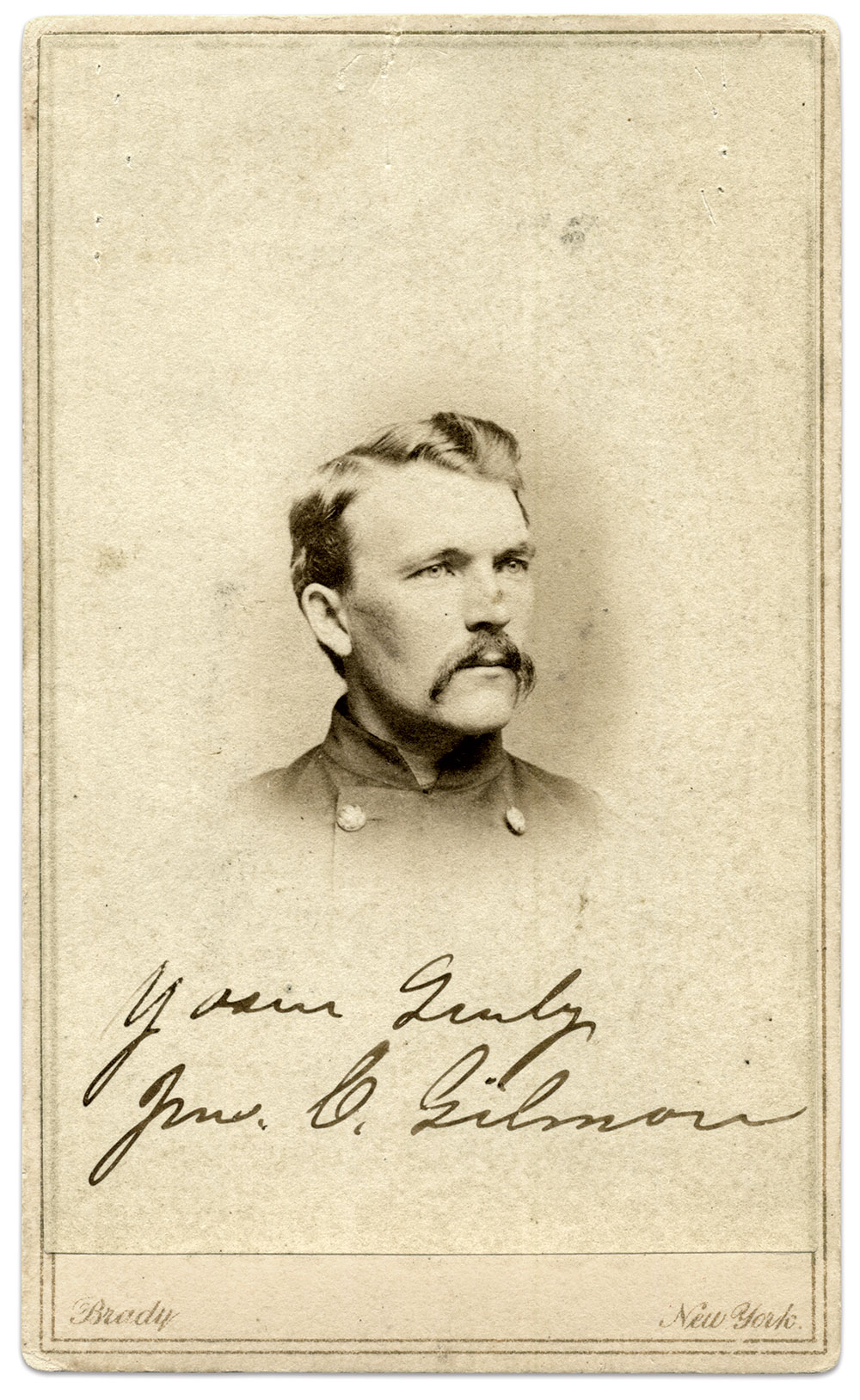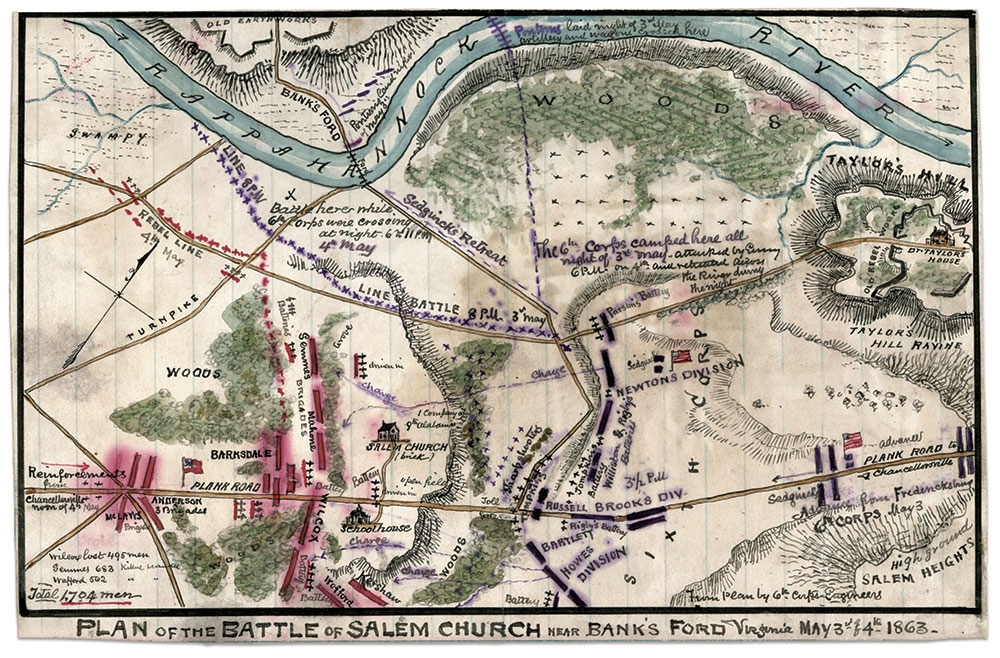
On the battlefield of Salem Church, the 16th New York Infantry held its ground against a larger force of Confederates. But as the fire intensified and the full weight of the disparity of numbers played out, the left flank of the blue line began to waver. The major in command of the battalion on the regiment’s right flank, John Curtis Gilmore, sensed the danger and seized the moment.
Turning command of the battalion over to the senior company captain, he hurried down the flickering line towards his color bearer. He navigated a gauntlet of crossfire and made it to the flag without getting hit.
Gilmore, a 26-year-old born in Canada to Irish parents, had settled in New York at a young age. After the shock of Fort Sumter, he set aside his job as a teacher in Potsdam, N.Y., and helped organize what became Company F of the 16th. He received a captain’s commission and company command. Gilmore proved his mettle during the First Battle of Bull Run and the 1862 Peninsula Campaign. During the operations on the Virginia Peninsula, he suffered a wound and barely escaped capture at the Battle of West Point on May 7.
Almost a year later, on May 3, 1863, now Maj. Gilmore and the rest of the regiment rushed to fill a gap after the rebels overwhelmed another regiment of Empire State men at Salem Church, part of the Chancellorsville Campaign. The 16th moved into the furnace of fire, and it soon became evident that it might be doomed to the same fate as the fellows who last occupied the place.


Gilmore had other plans. Taking the flag of the 16th in hand, he and the color sergeant moved to the front and center of the regiment’s line. Gilmore unfurled the flag for all to see. Then, in a loud voice that could be heard above the din of fire, he ordered the men to “hold straight on.”
The men obeyed. The line held, though the final outcome was a victory for the Confederates. The 16th paid a high price in casualties—20 dead, 87 wounded at 49 missing.
A couple weeks later, the 16th mustered out of service after its two-year enlistment expired. Gilmore returned to the army with the 193rd New York Infantry during the waning weeks of the war. He remained in the military after the end of hostilities and went on to serve in the Spanish American War as Chief of Staff to another old soldier who had received the Medal of Honor for gallantry during the Chancellorsville Campaign—Nelson A. Miles, the commanding general of the U.S. Army.
Gilmore retired in 1901 as a brigadier general. He lived until age 85, dying in 1901 in Washington, D.C. His remains are buried alongside his wife, Harriet, in Arlington National Cemetery.
SPREAD THE WORD: We encourage you to share this story on social media and elsewhere to educate and raise awareness. If you wish to use any image on this page for another purpose, please request permission.
LEARN MORE about Military Images, America’s only magazine dedicated to showcasing, interpreting and preserving Civil War portrait photography.
VISIT OUR STORE to subscribe, renew a subscription, and more.

